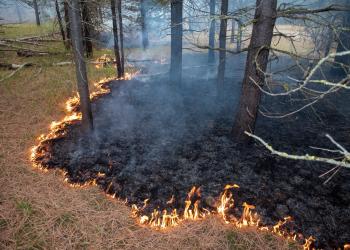Management
When we see a wildfire, our first response is to put it out. For decades, the Forest Service has done just that when it came to wildland fires. But science has changed the way we think about wildland fire and the way we manage it. We still suppress fires, especially if they threaten people and communities, but we understand that fire has a role in nature – one that can lead to healthy ecosystems. So we look for ways to manage it to play its role, for instance, by igniting prescribed fires.
The Forest Service conducts cutting-edge research and develops tools to help land managers better understand and manage fire. Our scientists study fire behavior and the effects of fire on ecosystems and society, as well as offer management options.
Prescribed Fire

The Payette National Forest conducts prescribed fires in the spring and fall of each year, depending on weather conditions.
These prescribed fires reduce surface fuels, increase height of the canopy, reduce small tree densities, and promote fire resilient trees, thereby improving our ability to protect communities from wildfire as well as conserve current and future timber values. Additionally, these fires improve wildlife habitat, promote long-term ecosystem integrity and sustainability by reducing the risk of high-severity wildland fire.
Wildfire Crisis Strategy

In January 2022, the Forest Service launched a robust strategy to address the wildfire crisis in the places where it poses the most immediate threats to communities, critical infrastructure, and natural resources. The strategy combines a downpayment of congressional funding with years of scientific research and planning into a national effort that will dramatically increase the scale and pace of forest health treatments. Through the strategy, the agency will work with states, Tribes and other partners to addresses wildfire risks to critical infrastructure, protect communities, and make forests more resilient.



